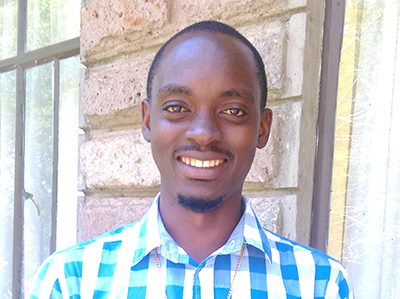Making silage from pineapple-products
Muhammed Kiggundu, Msc, Uganda
Sustainable livestock production under smallholder systems in Uganda is premised on optimal utilization of on-farm resources while preserving ecosystem services for the future. My study highlighted the need for optimal resource utilisation in order to achieve the basic principles of organic agriculture especially the need to have a closed nutrient cycle on the farm.
I find the subject interesting because it gives me an opportunity to humbly contribute to sustainable livestock production in sub-Saharan African. This is more appropriate especially in my region where livestock production by smallholder farmers continues to be undermined by lack of adequate quantities of quality livestock feeds, which results into low production below their productive potential.
Among the livestock species, dairy cattle are especially critical to contributing to elimination of extreme hunger and contributing to the daily incomes of households through milk sale. However, we noticed that organic pineapple farmers who kept dairy cattle lamented of low milk yields despite the availability of alternative non-conventional feed resources like crop residue. I therefore chose to work with crop residues particularly pineapple by-products because such crop residues have a huge potential to improve livestock productivity through lowering the cost of feeding under smallholder systems. Moreover, if pineapple processing by-products is not properly disposed of it can adversely pollute the environment as they undergo putrefaction.
I was hoping to develop a step-by step technique of conserving pineapple by-products in form of silage. Hitherto, most scientists had considered it difficult ensile pineapple by-products due to their high moisture content and acidic nature. By converting the pineapple processing by-products into silage, it was hoped that farmers will have access to a feed resources during the dry season which could sufficiently complement other feed resources available to the farmers for improved milk yields in dairy cattle.
We discovered that farmers had underestimated the potential of pineapple by-products and as such attached very little value to this resource despite its abundance during the dry season. Our study showed that pineapple by-products have very good ensiling capacity due to their high water soluble carbohydrate content which is a prerequisite for any successful silage fermentation to take place. Our results further showed that wilting the pineapple products and inclusion of legume foliage considerably improved the quality of silage from the pineapple by-products.
The study is important because when farmers adopt the technology of using pineapple by-products in feeding their dairy cattle; this improves milk yields from their cows, which in turn improved household food security and incomes. In addition, collection of the pineapple by-products from the processing centres eliminates pollution from the flow of effluent but also removes a source of contamination from the processing centres as the heaps of pineapple by-products attract a lot of flies. The research enormously benefits the entrepreneurs of small-scale pineapple processing centres who have to contend with a lot of pineapple by-products during the process of value addition. Besides dairy cattle farmers can also conserve the pineapple by-products into silages, which can be used to feed cows during the dry season when other farmers are faced with the challenge of feed scarcity.
Findings of this study in the laboratory showed that pineapple by-products combined with jack bean foliage is a promising high quality feed resource, however, a need to carry out on-farm dairy cattle feeding trials to assess response in dairy milk yield and quality due to feeding silage from pineapple processing by-products was identified. If farmers who do not own cattle can turn the pineapple processing by-products, hitherto referred to, as trash into cash remains to be seen as one of the most successful stories for the sustainability of this ProGrOV project.
More about the project

Muhammad Kiggundu, MSc.
Makerere University, Uganda.
Enrolment date: Nov 2010
Supervision: F. Kabi External
Supervisors: M. Vaarst
Muhammad Kiggundu graduated in January 2016. He is currently Research Officer at the National Livestock Resources Research Institute (NaLIRRI) as a research officer under the Livestock Nutrition program. His responsibilities include research to develop and disseminate technologies to optimise the reproductive and productive potential of dairy cattle in Uganda. He also works in the livestock Nutrition Laboratory and is involved in carrying out Nutritional analysis of feed samples and other livestock products.
Contact
MUHAMMAD KIGGUNDU (kiggundumuhammad@gmail.com)
Phone: +256 777 690 092
Livestock Nutrition program, National Livestock Resources Research Institute (NaLIRRI), National Agricultural Research Organization (NARO). P.O.Box 7504, Wakiso (Uganda).
